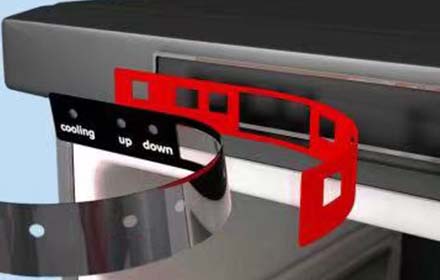
Polyethylene tape, as an economical and practical packaging material, is widely used in various fields such as industry, logistics, and construction. Its popularity stems from its excellent properties, such as flexibility, durability, and chemical resistance. Understanding the production process and cost-effectiveness of polyethylene tape is crucial for both manufacturers and consumers. We will delve into the production process of polyethylene tape and its impact on cost-effectiveness.
Polyethylene tape is made from polyethylene, a polymer produced through the polymerization of ethylene. Depending on its density, it can be classified into high-density polyethylene, medium-density polyethylene, and low-density polyethylene (LDPE). Low-density polyethylene is very soft and is produced through high-pressure copolymerization. On the other hand, high-density polyethylene is produced through low-pressure copolymerization. The production process of polyethylene tape directly affects its quality and cost.
Raw Material Selection
The production of polyethylene tape begins with high-quality polyethylene resin. Choosing the right raw materials is key to ensuring tape performance and reducing costs.
Polymerization
This process starts with the polymerization of ethylene gas, which comes from natural gas or petroleum. This process can be completed through either high-pressure or low-pressure methods, producing LDPE or HDPE, respectively. In the high-pressure process, ethylene gas is subjected to high temperatures and high pressure, leading to the formation of long polymer chains. Conversely, the low-pressure process uses a catalyst to polymerize ethylene at lower temperatures and pressures.
Melt Extrusion
The polyethylene resin is melted at high temperatures and then extruded through an extruder to form a thin film. This step requires precise control of temperature and pressure to ensure the uniformity and thickness of the film.
Slitting
After the film is extruded, it is cut into narrow strips of the desired width. These strips will become the polyethylene tape. The slitting process must be precise to ensure that the tape has a uniform width and edges.
Coating with Adhesive
Applying pressure-sensitive adhesive uniformly on the polyethylene film is a critical step in the production process. The quality of the adhesive directly affects the adhesive performance of the tape.
Cooling and Curing
The coated tape needs to go through cooling and curing processes to ensure the stability of the adhesive and the formation of the tape.
Slitting and Rewinding
Finally, the large rolls of polyethylene tape are slit into different widths and lengths to meet the needs of various customers and are rewound for packaging.
Raw Material Cost
Polyethylene is derived from ethylene, a by-product of natural gas and petroleum refining. The abundance of raw materials will affect the production cost of polyethylene.
Production Efficiency
The production process of EGRET company polyethylene tape is highly efficient and can be easily scaled to meet large demand. The extrusion process allows for continuous production, reducing downtime and increasing output. Advances in manufacturing technology have also improved the efficiency and speed of the production process, further reducing costs.
Versatility and Performance
Polyethylene tape for aircon has excellent performance characteristics, such as flexibility, durability, and chemical resistance. Its ability to perform well in various environments reduces the need for multiple types of tape, simplifying inventory and lowering costs for end-users.
Energy Consumption
Energy consumption during the production process is also an important cost factor. Adopting energy-efficient technologies and equipment can reduce energy costs.
Quality Control
Strict quality control can reduce the defect rate, increase the product yield, thereby reducing costs.
Long Shelf Life
Polyethylene tape has a long shelf life and can maintain its properties over time. This reduces the need for frequent replacements and minimizes waste, saving costs for consumers.
The production process and cost-effectiveness of polyethylene tape are interrelated. By optimizing the production process, improving production efficiency, reducing raw material and energy costs, and implementing strict quality control, high-quality polyethylene tape can be produced while maintaining competitive prices. With continuous advances in technology and growing market demand, the production of EGRET polyethylene tape will continue to move towards higher efficiency and environmental friendliness.